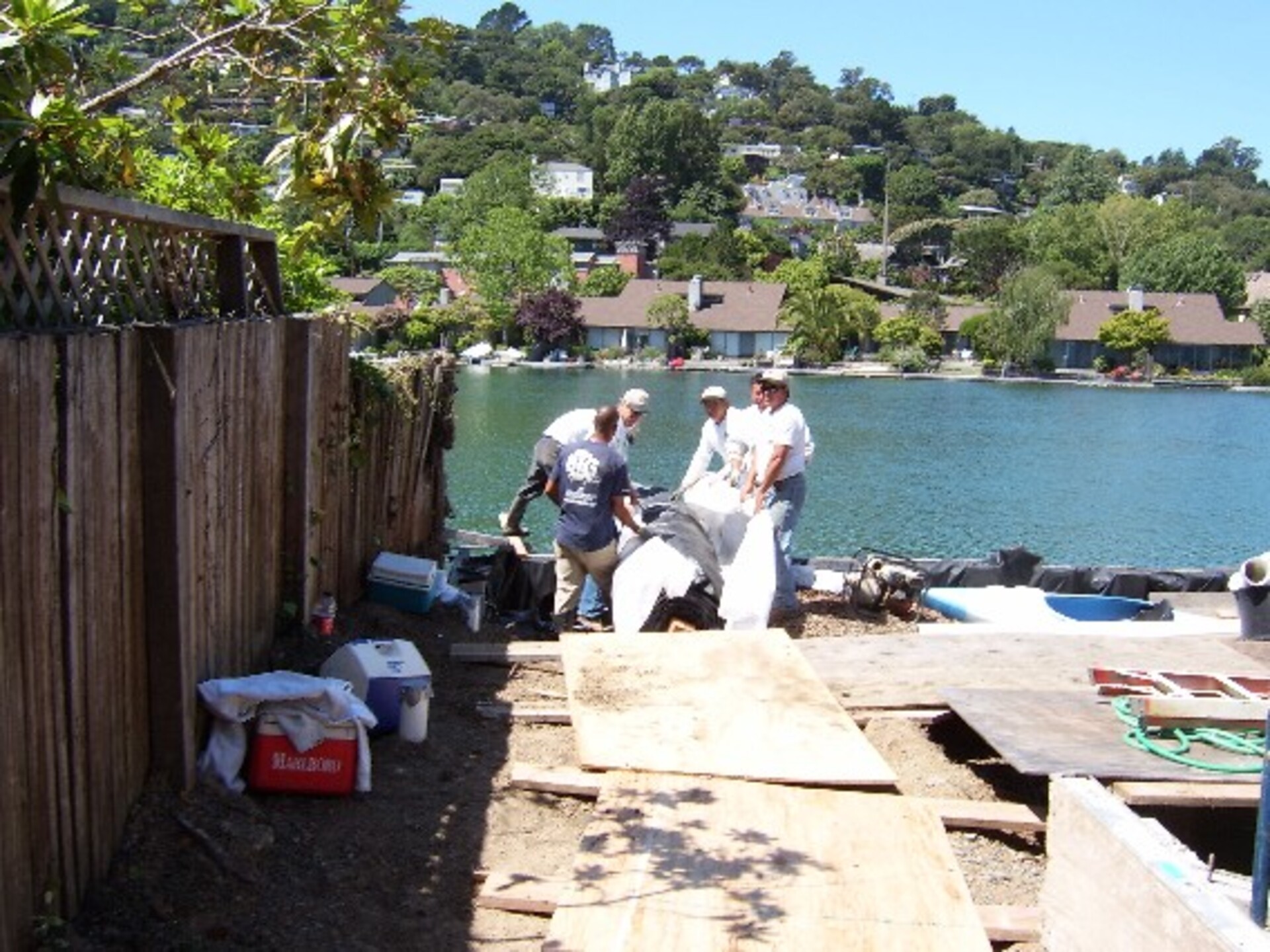
1.) This project involved de-watering in order to construct a boat ramp. The white material being removed is the protective wrap surrounding the AquaDam. AquaDams are delivered in a rolled-up form, similar to a carpet roll on a wooden beam. They are wrapped in a protective covering and include lifting ropes or straps for easy transportation.
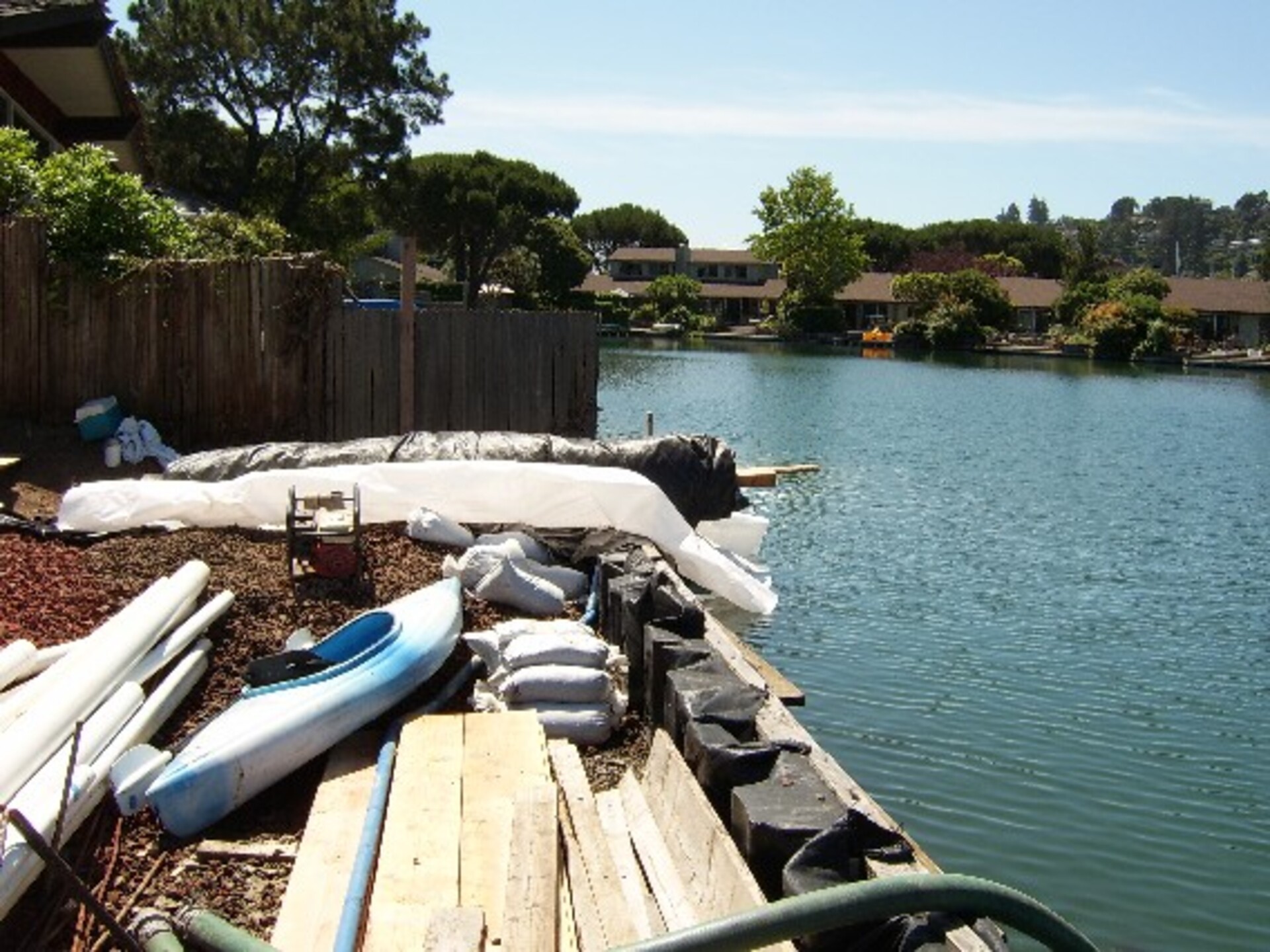
2.) This job required the use of a double closed end (DCE) AquaDam, because there was no existing starting bank available here.
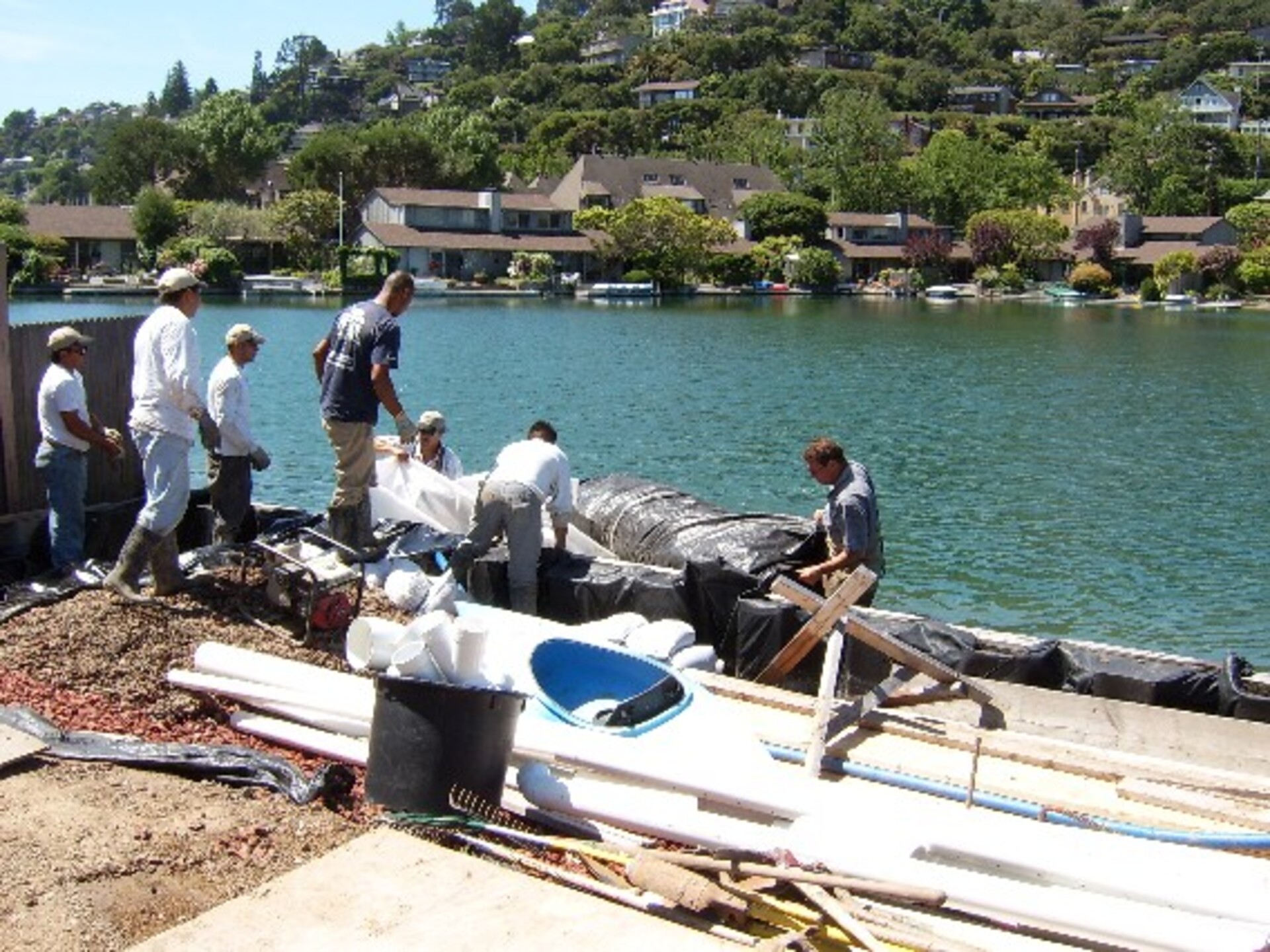
3.) The AquaDam® is now in the water and ready to be floated into position. Once in place, the ties securing the roll can be cut, allowing the AquaDam® to be unrolled and filled with water. An AquaDam® is made of material less dense than water, allowing it to float in water and be transported to the desired location before being filled with water to create a barrier.
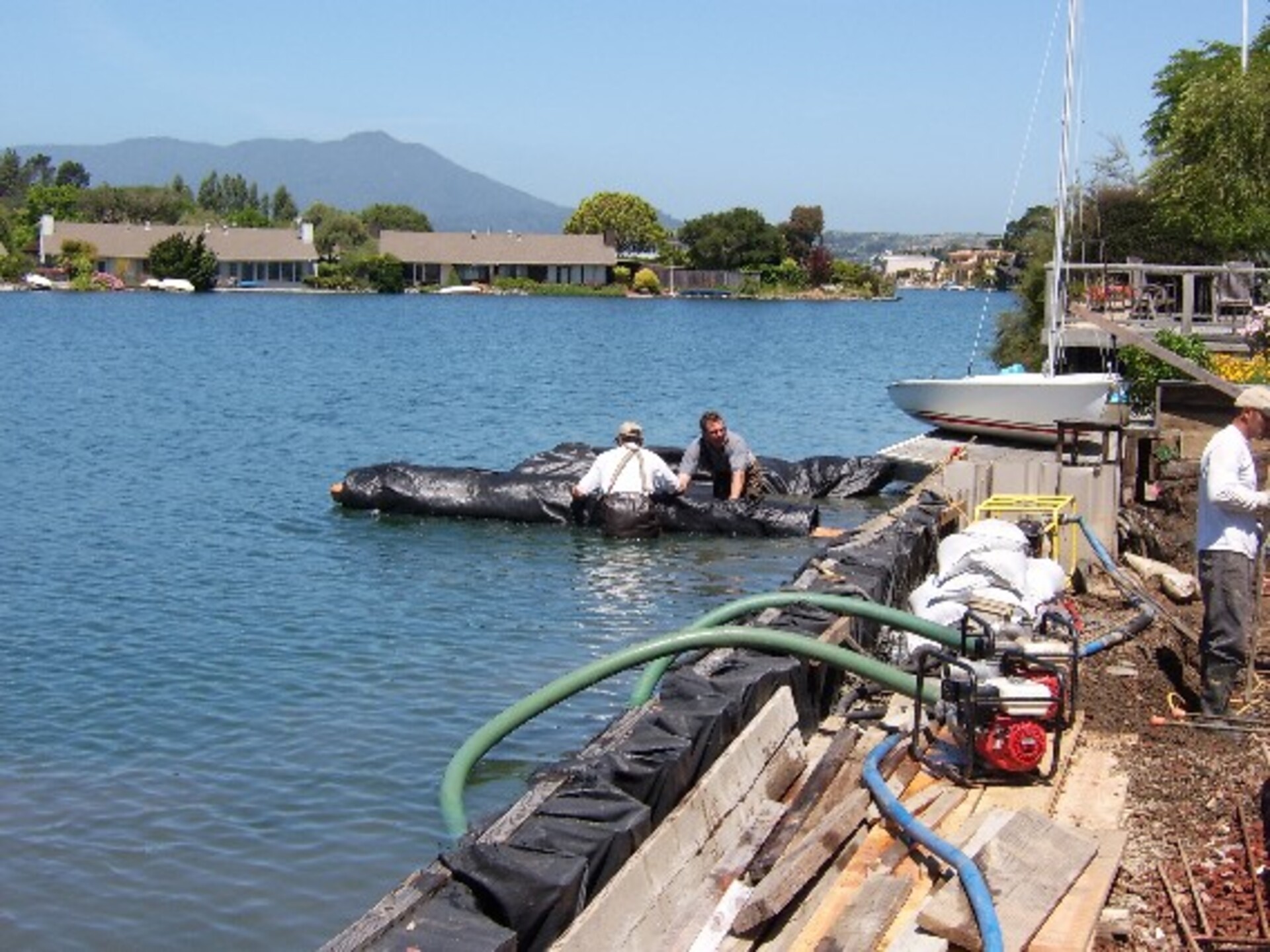
4.) Here is where the DCE AquaDam® will start at. Workers unroll the first few feet to expose the fill-tubes, so that discharge hoses can be attached and the DCE AquaDam® can be filled with water.
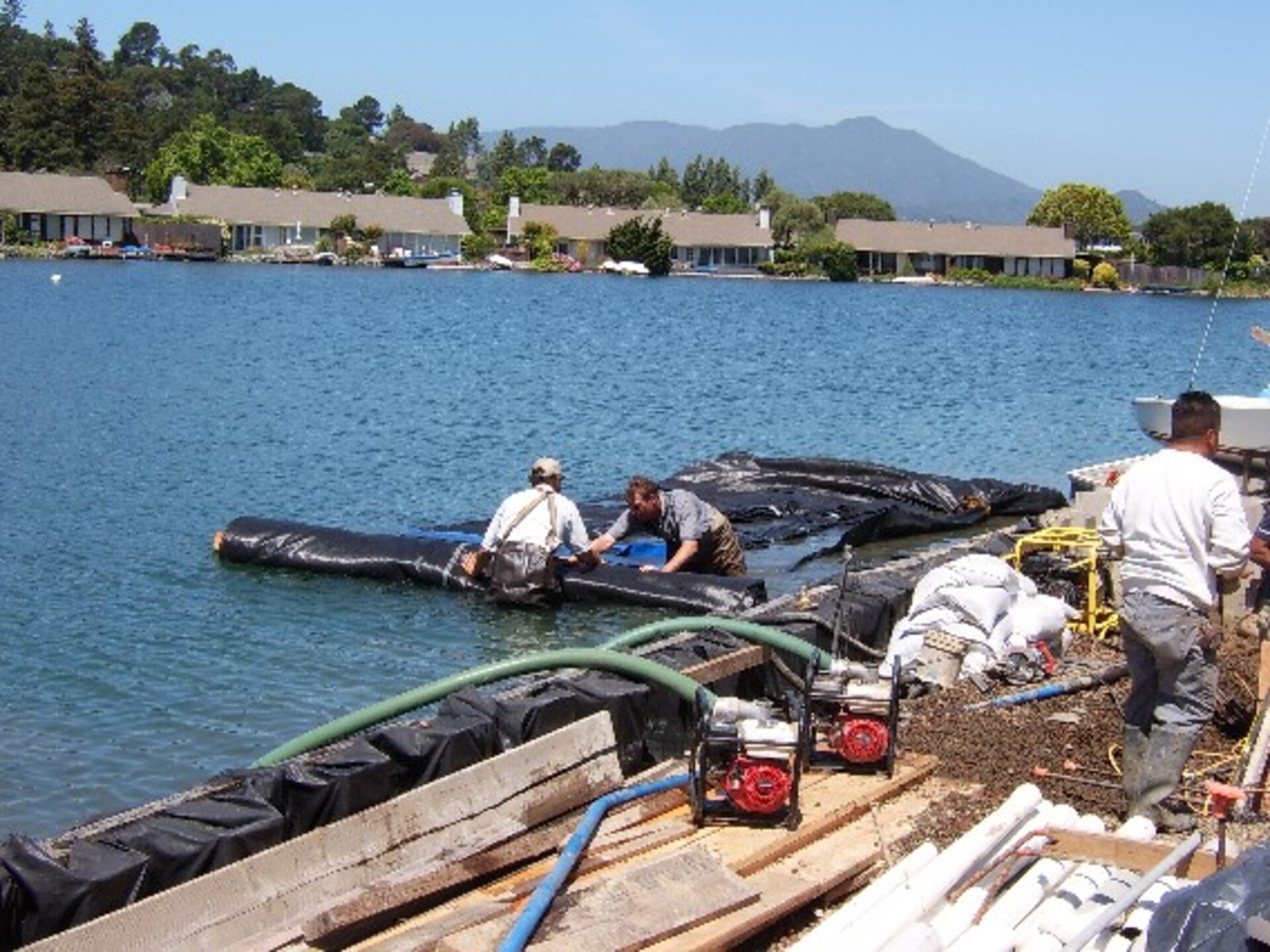
5.) A worker stands in front of the AquaDam® to make sure it doesn't unroll too fast, while allowing the dam to build up water depth, head, inside for weight.
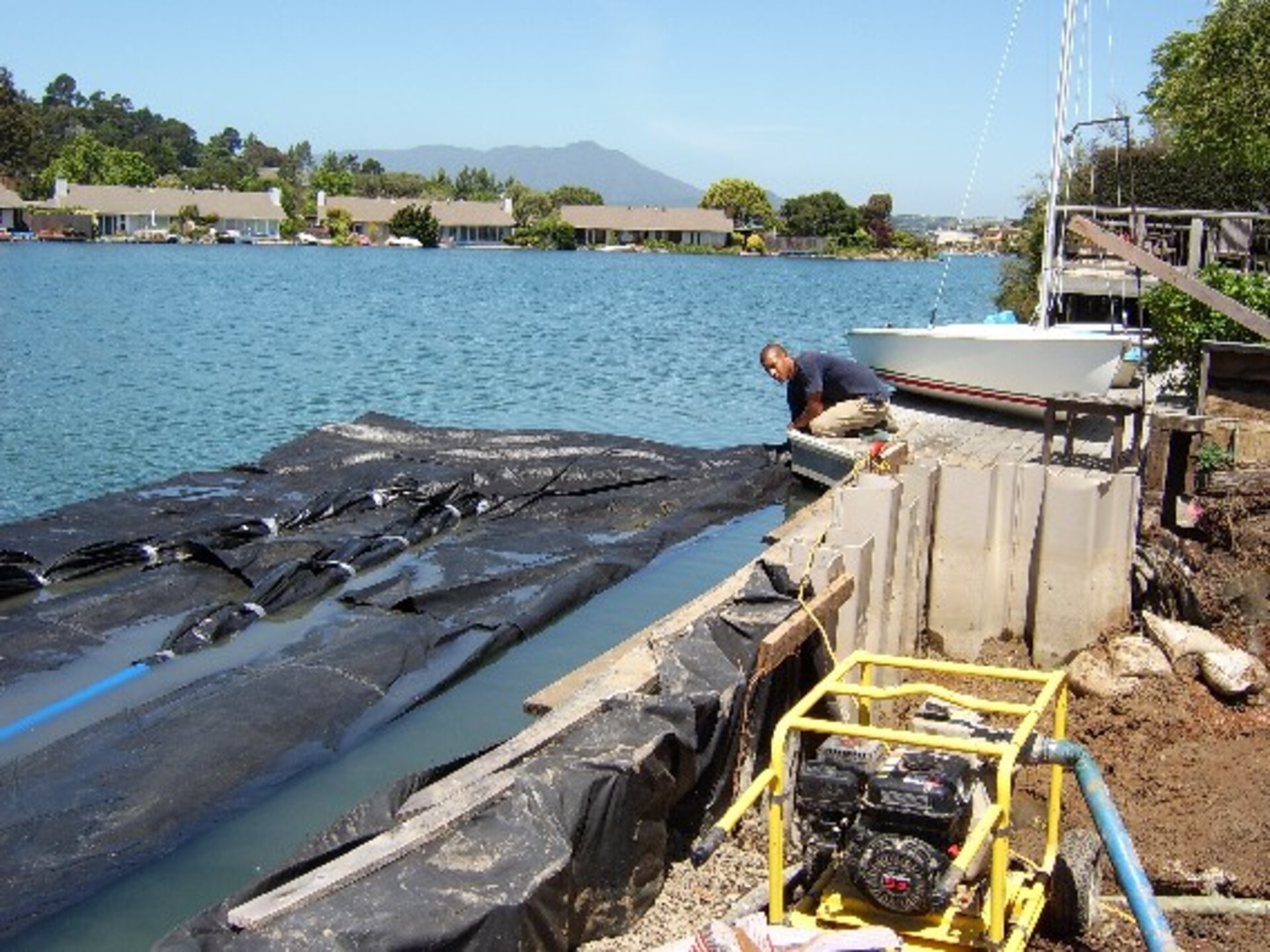
6.) The blue discharge hose on the top of the AquaDam® has been inserted into one of the fill-tubes. You can see how the fill-tube was taped to fit the size of discharge hose hose. The fill-tubes for a DCE AquaDam® are on top of the body of the unit allowing the unit to be free standing and not require a starting bank.
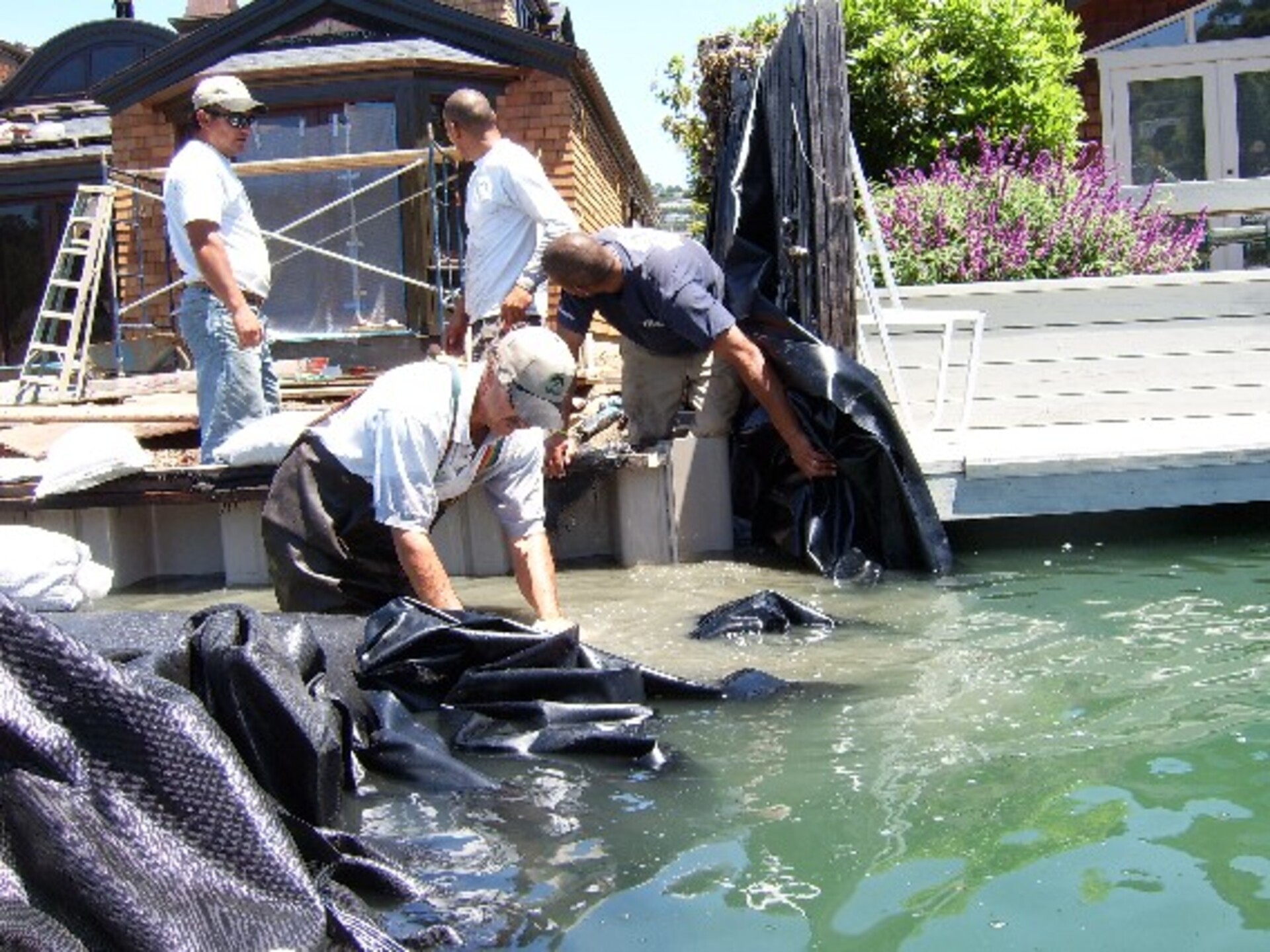
7.) A sandbag wall was built between the closed end of the AquaDam® and the sheet pile retaining wall. Sand bags were placed on and wrapped with a plastic sheet in order to make better seal.
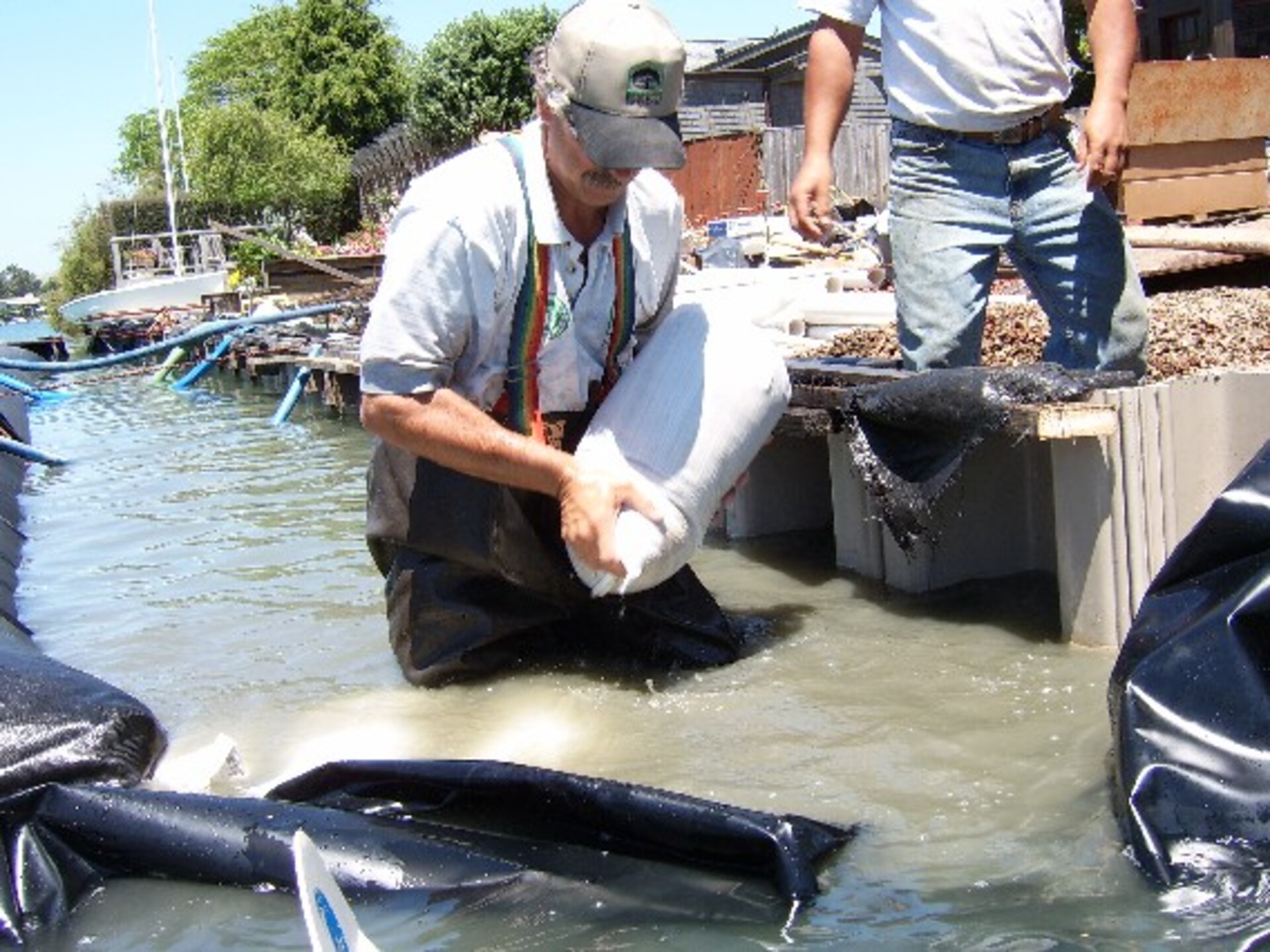
8.) For optimal performance, sandbags should only be filled to one-third of their capacity. This ensures that they can be tightly packed together, maximizing their effectiveness.
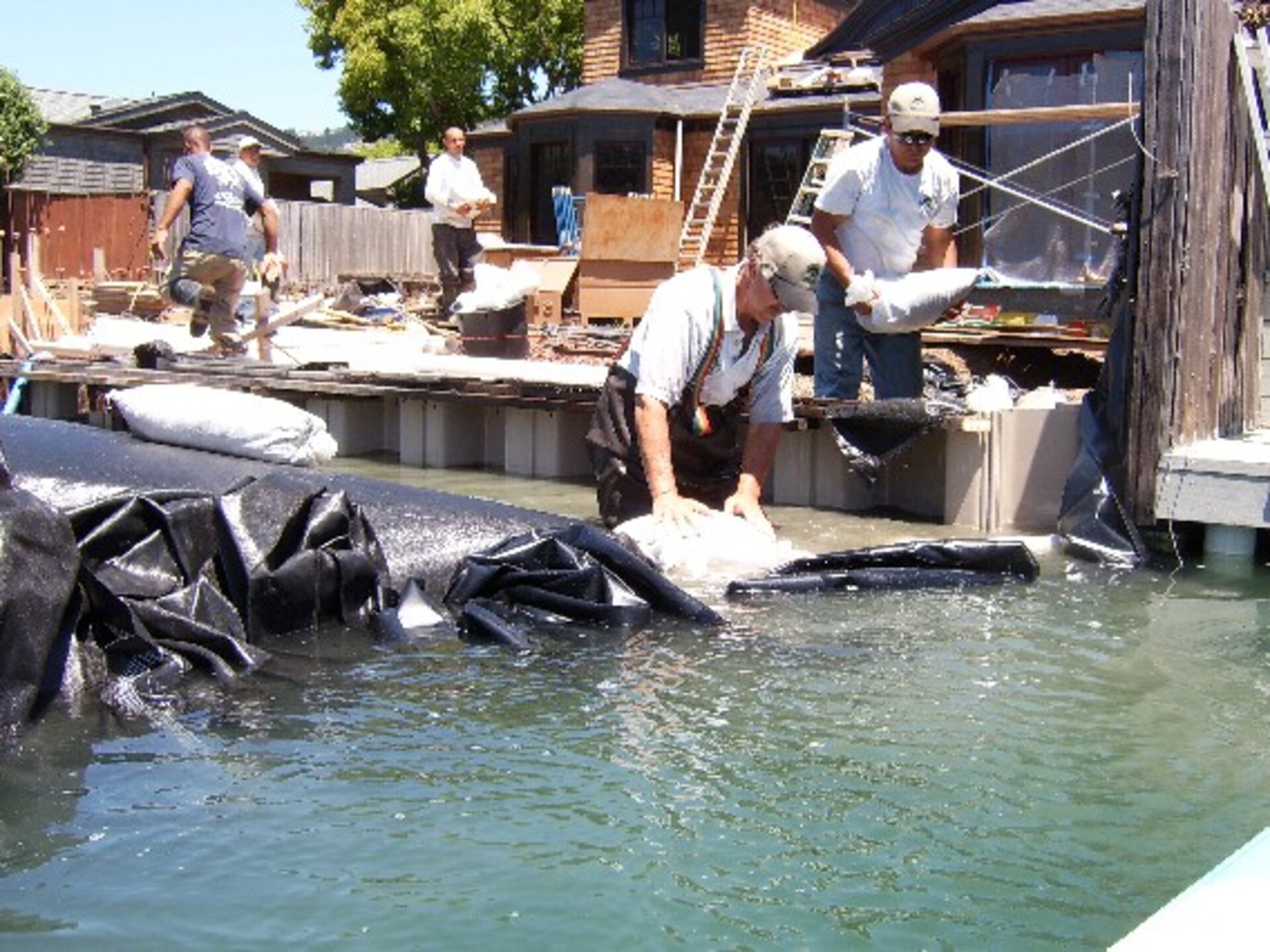
9.) Sandbagging is a laborious and physically demanding task.
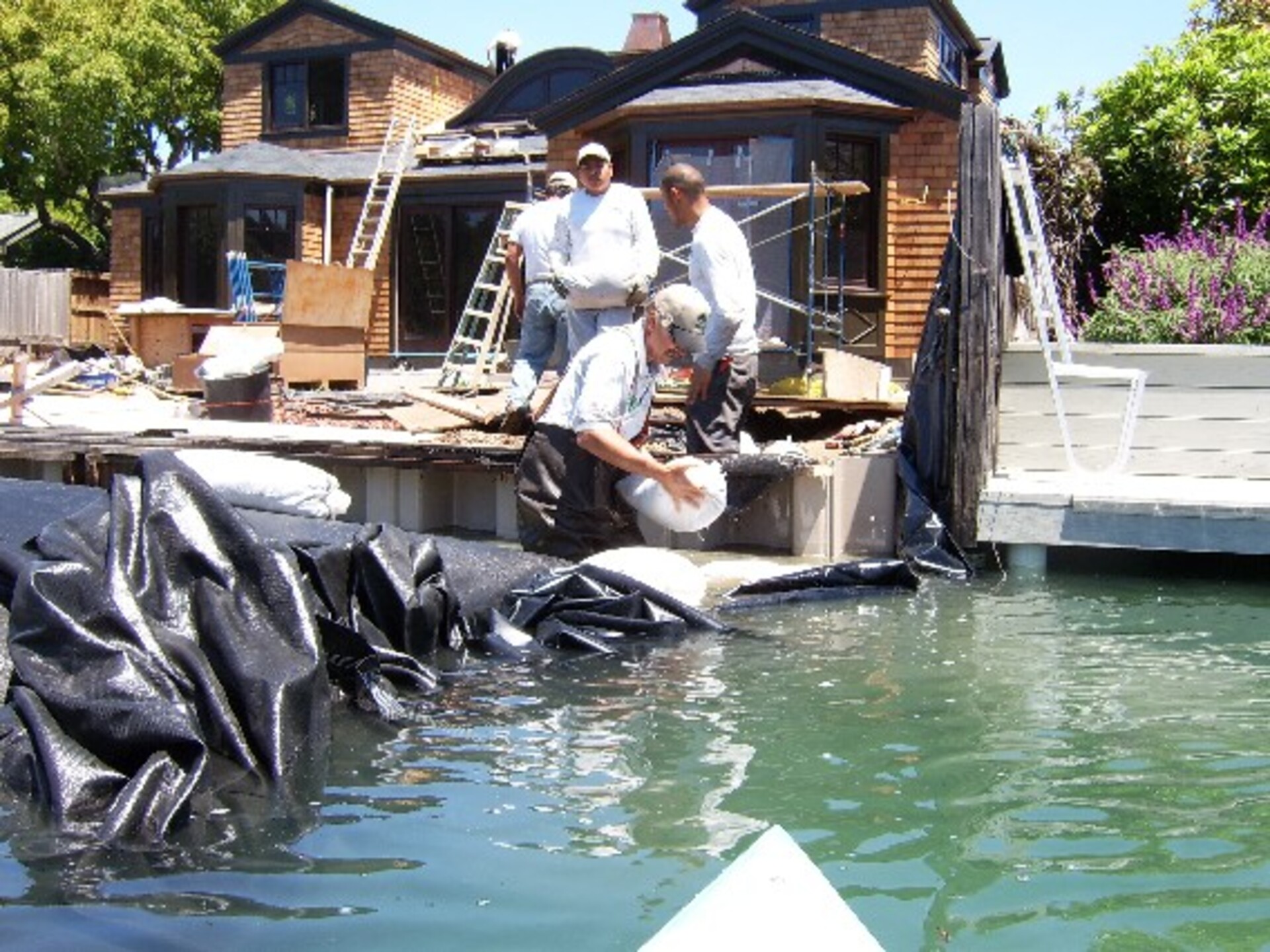
10.) Once the sandbag wall was completed, the area could be de-watered. The black plastic sheeting was pulled over the top of the sandbag wall, to help improve the seal.
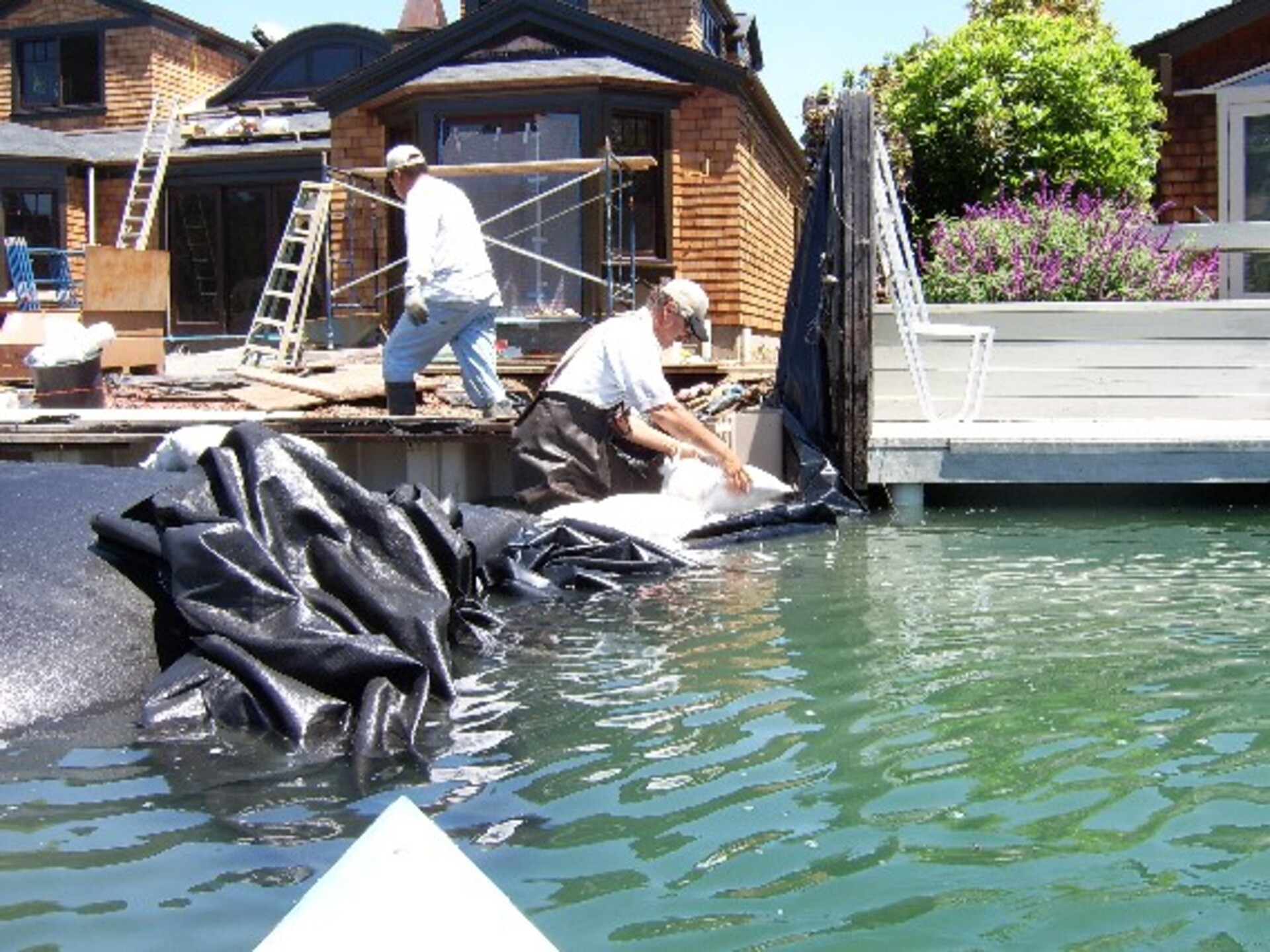
11.) Sandbags are usually stacked on top of each other in a staggered pattern at a 3:1 ratio for width to height. For example, a sandbag wall that is 3 feet tall and 9 feet wide would require approximately 45 sandbags per linear foot of wall.
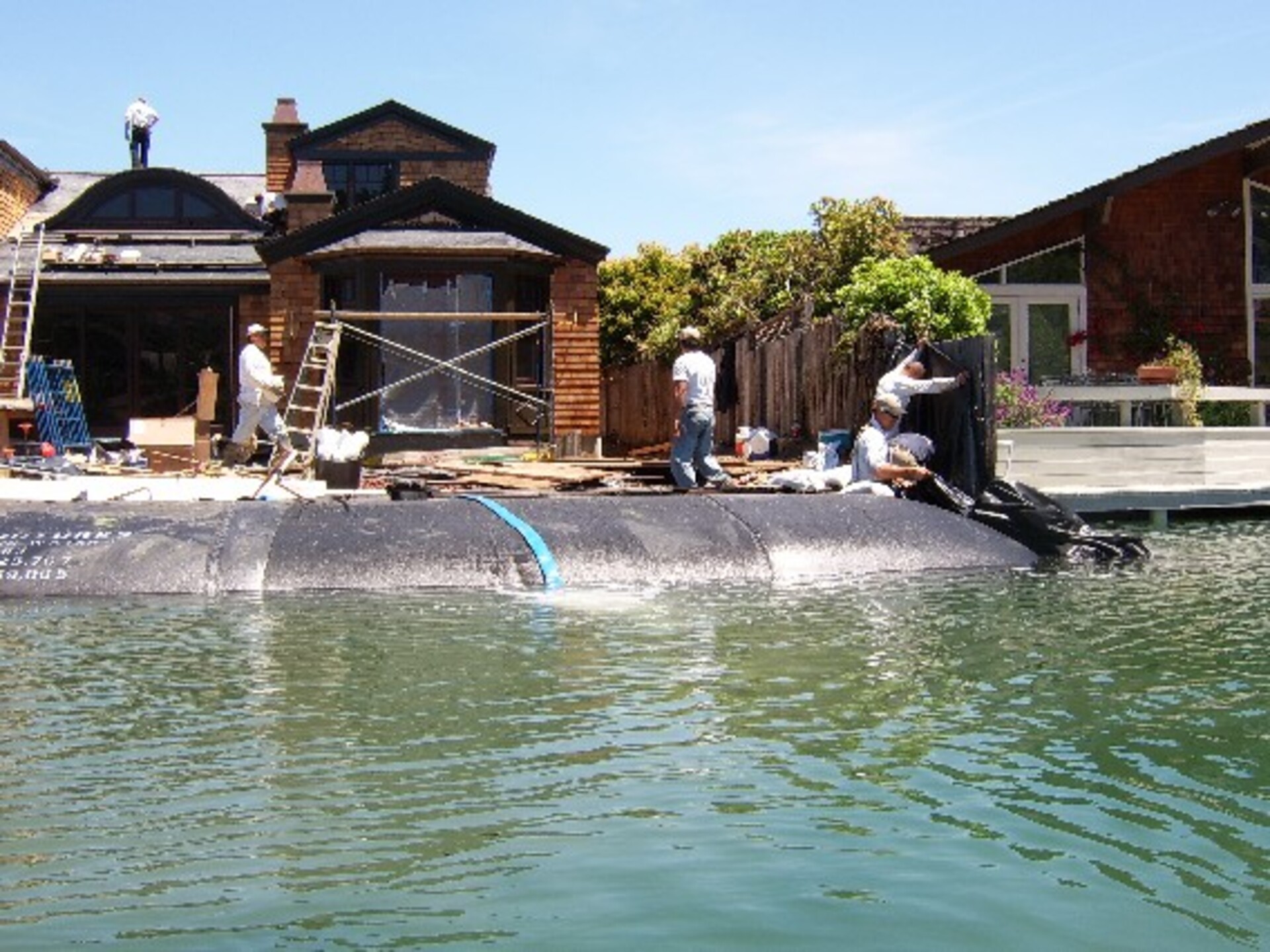
12.) The construction crew dedicated significant time and effort to the installation of the sandbag wall as part of the cofferdam.
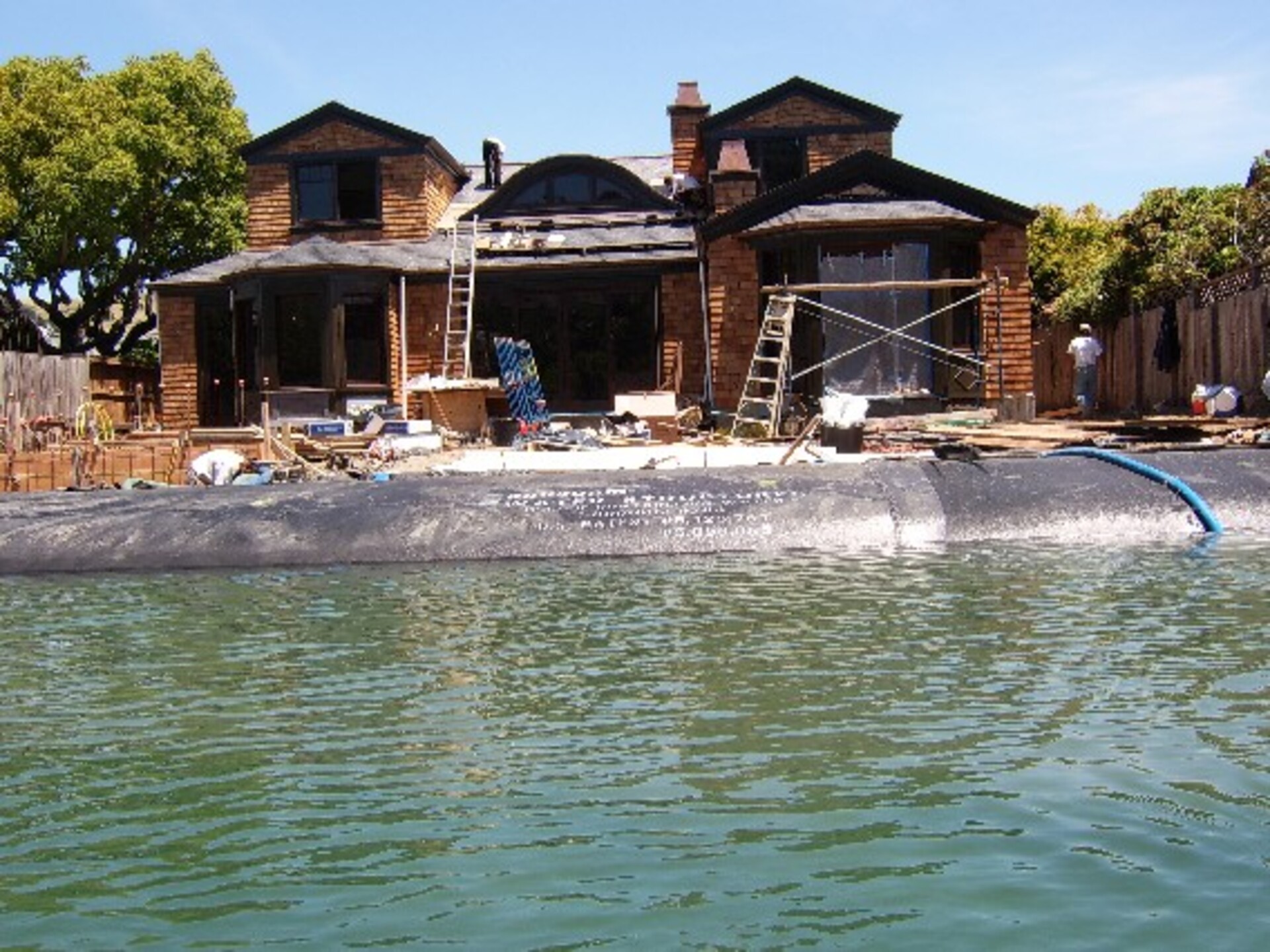
13.) With the AquaDam® now fully filled, workers have the ability to utilize its surface as a platform for walking or for setting down tools.
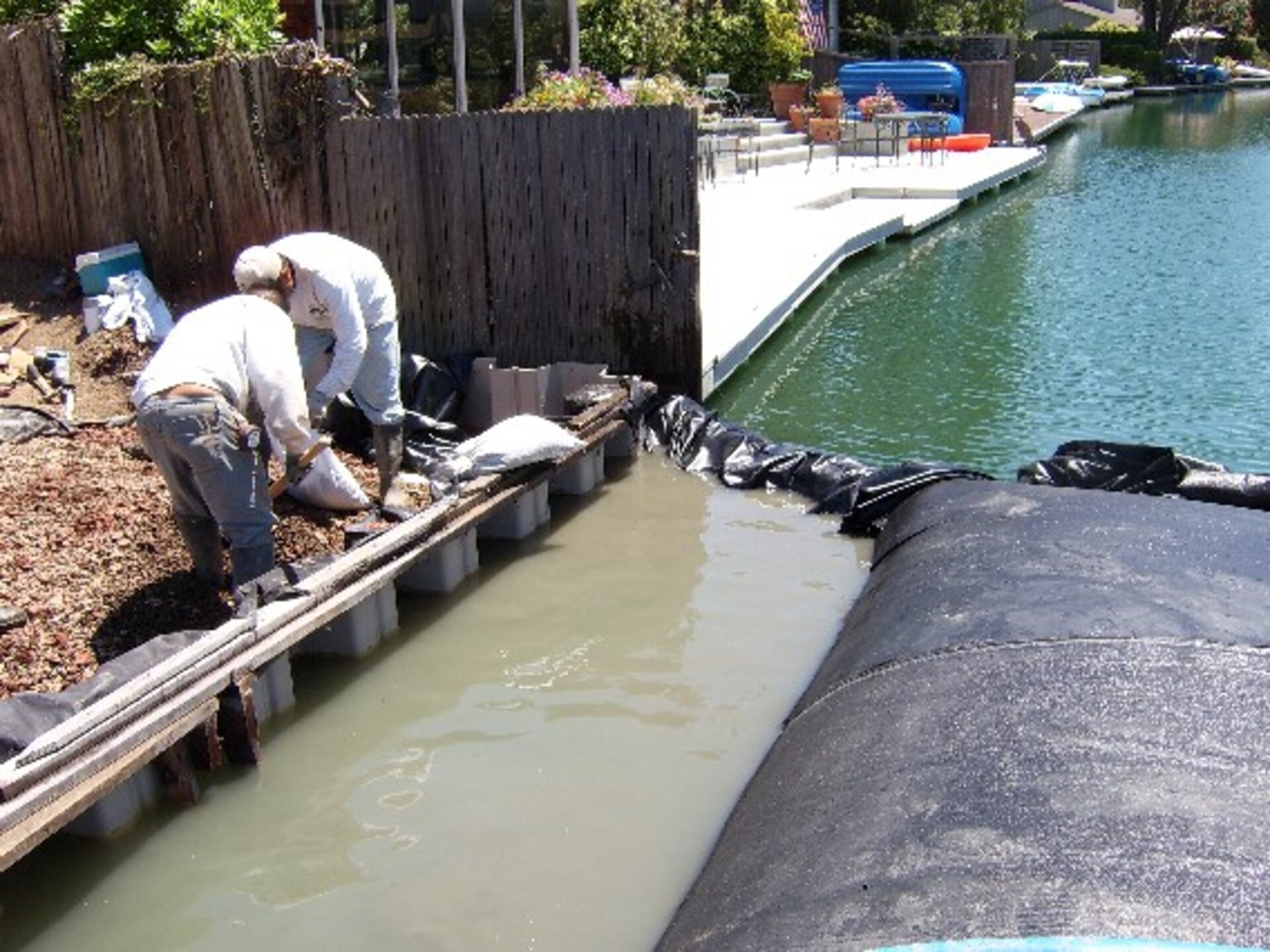
14.) After the sandbag wall was completed, the de-watering process of the work area commenced. Pumps were utilized to lower the water level in the work area.
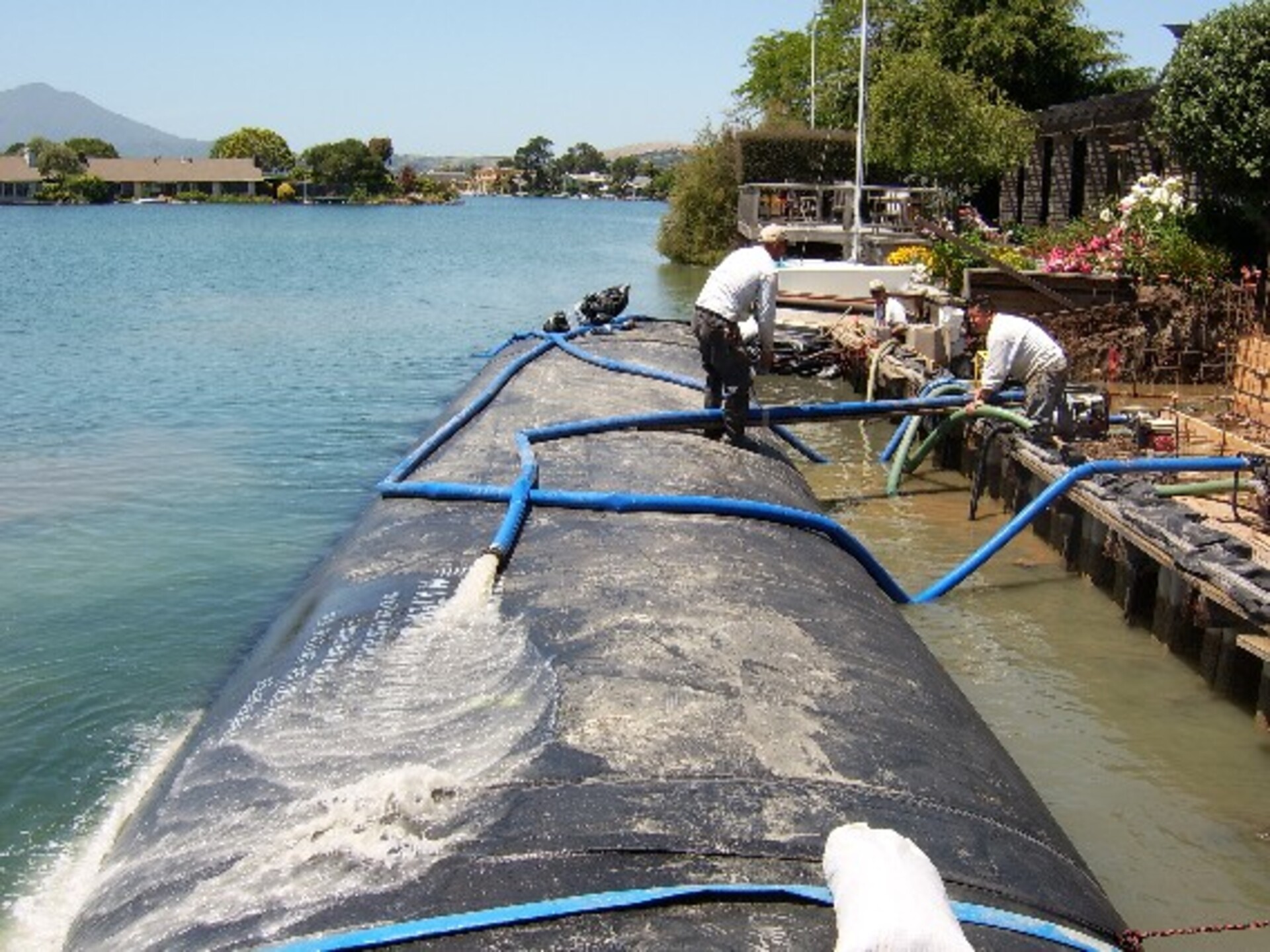
15.) Workers simply discharge the water being removed from the work area to the greater body of water.
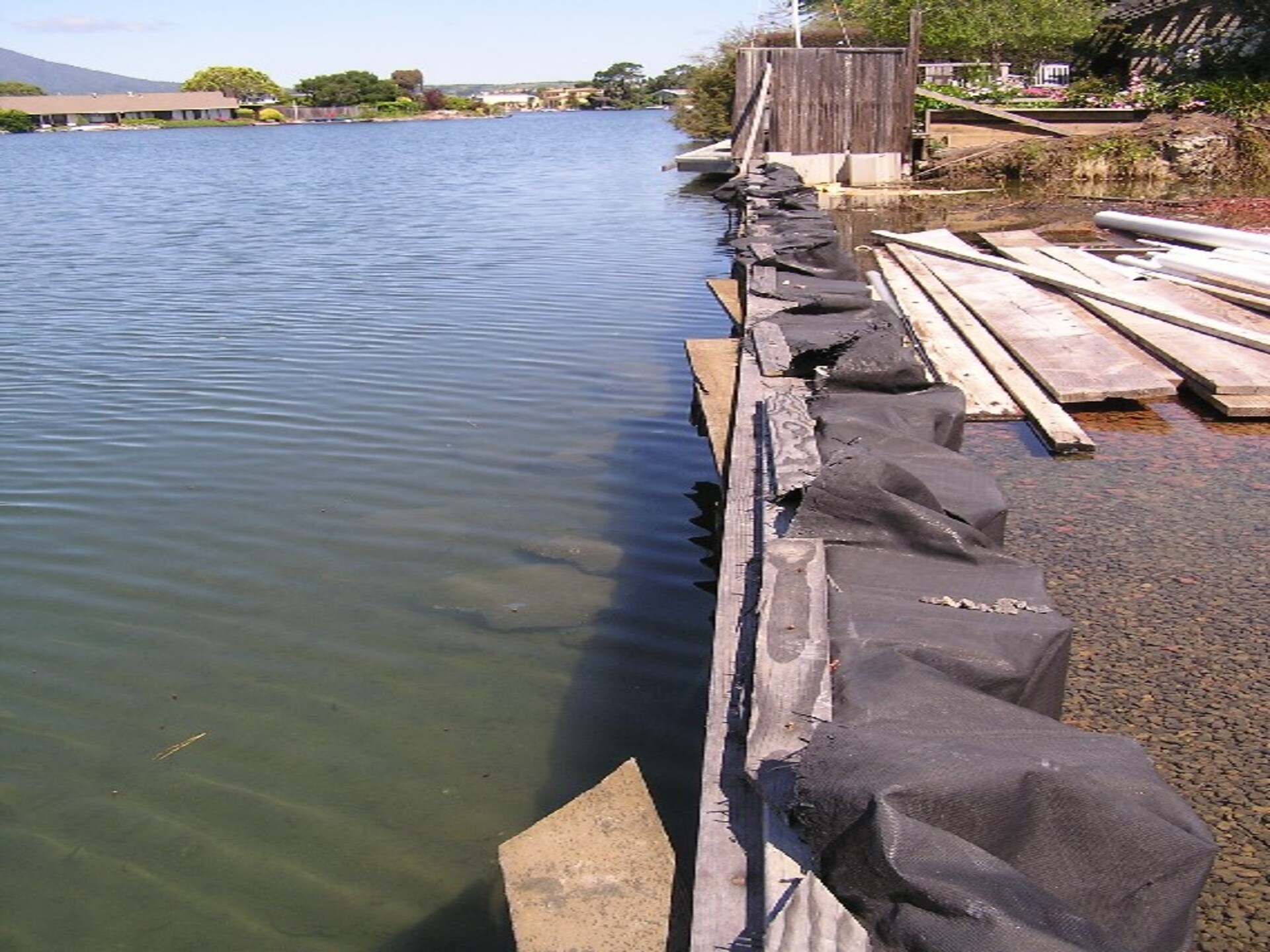
16.) This is the project area before the AquaDam® was installed. There was water on both sides of the sheet pile.
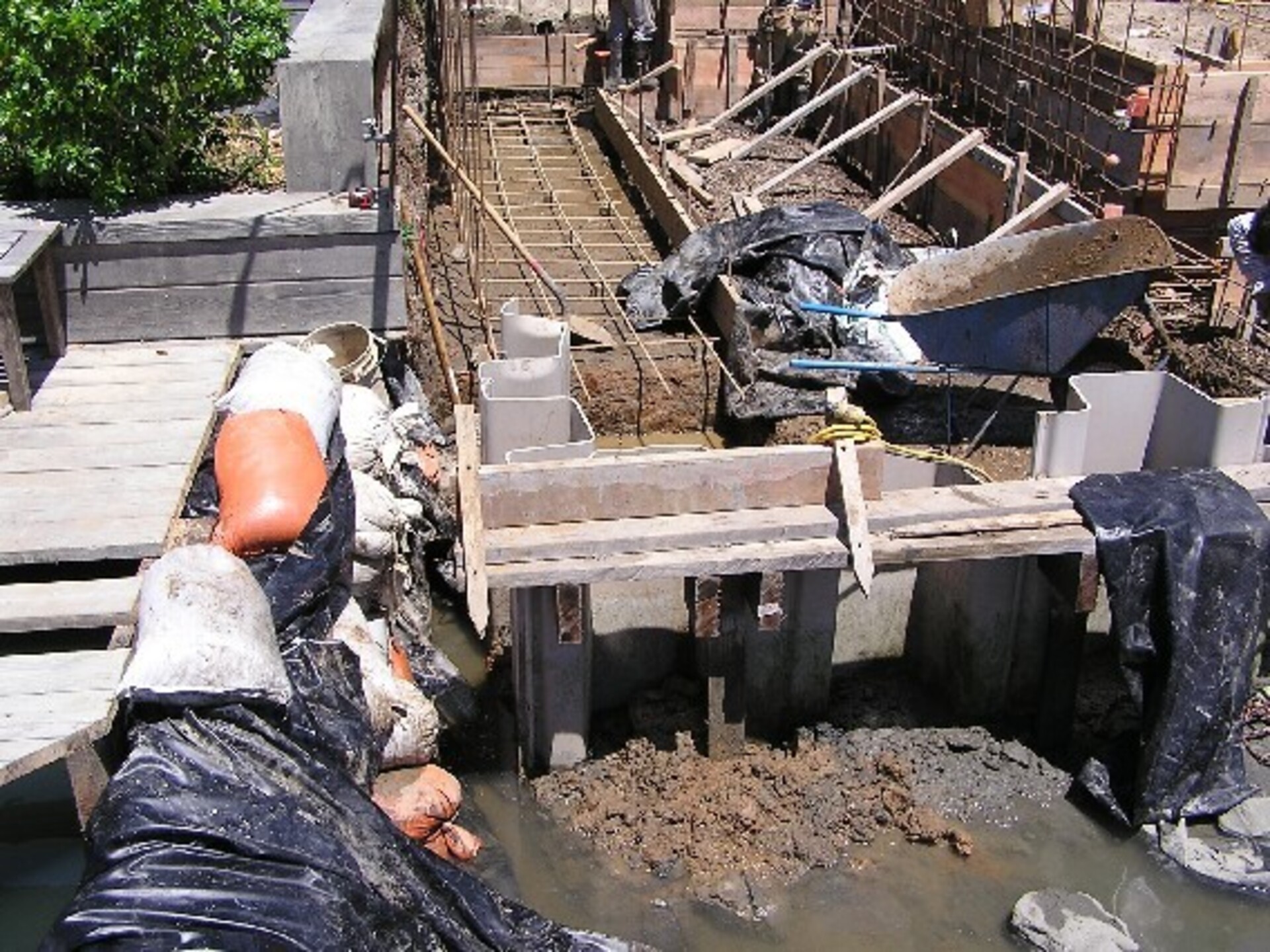
17.) This is where the concrete for the boat ramp was to be poured and the area that needed to be de-watered.
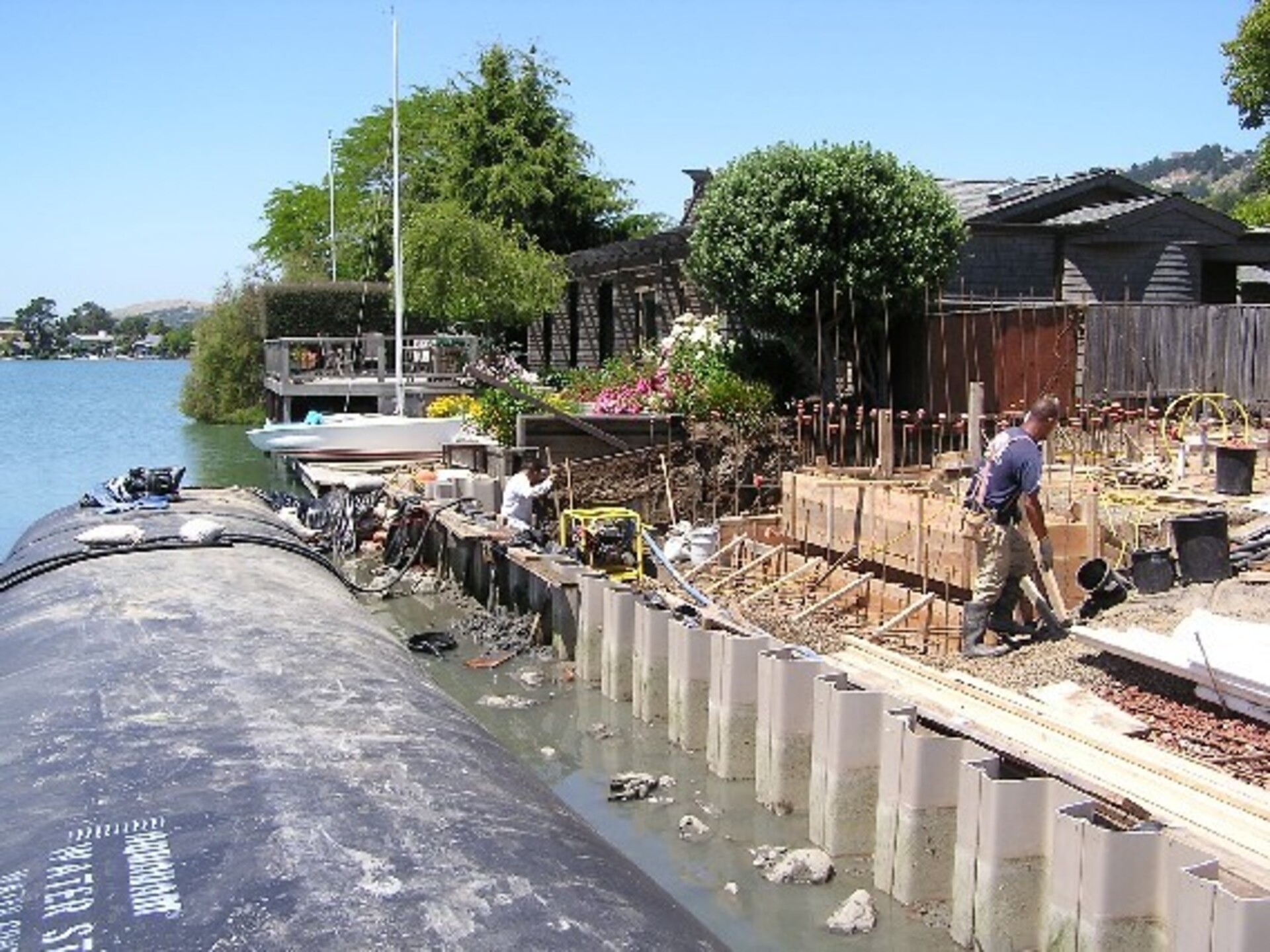
18.) Before the AquaDam® was in place, the area where the workers are standing would have been under water. Fantastic job AquaDam.
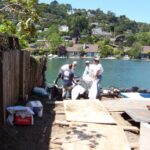
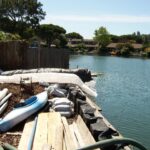
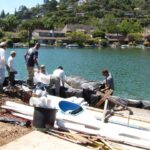
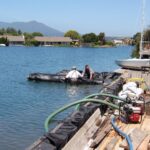

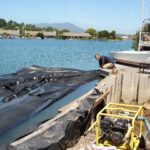
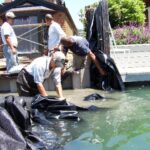
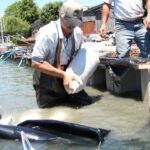
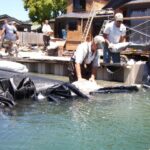
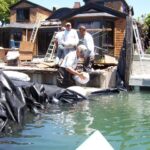
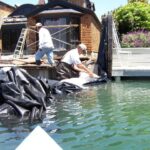
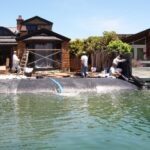
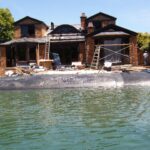
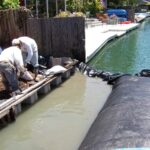
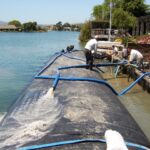
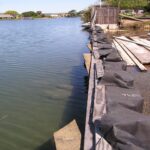
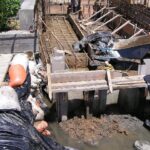
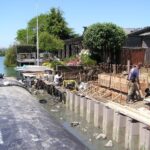
Double Closed End (DCE) AquaDam, Shoreline Isolation, Boat Ramp Construction
